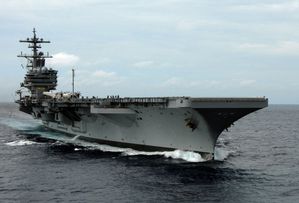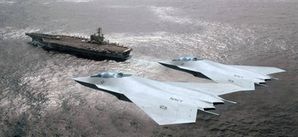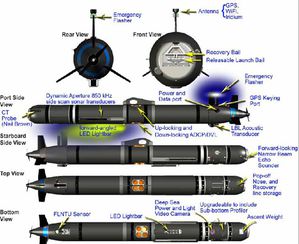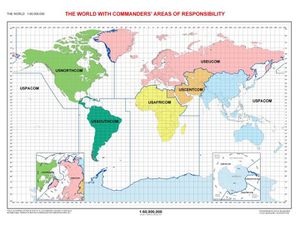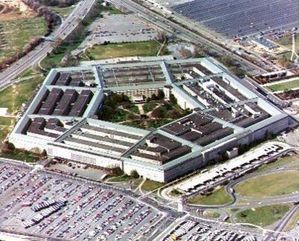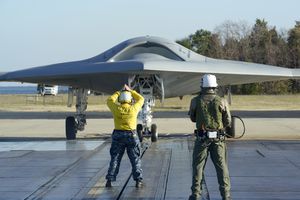
30 novembre 2012 forces.gc.ca - BG - 12.063
Le renforcement de la capacité de défense chimique des Forces armées canadiennes est devenu un besoin opérationnel critique. L’Armée procède actuellement à l’acquisition d’une suite logicielle
moderne de détecteurs d’agents chimique qui répond aux besoins actuels et qui est assez flexible pour s’adapter aux besoins futurs.
La sécurité dans le monde de demain
Les conflits et l’instabilité dans de nombreux pays partout dans le monde préoccupent le Canada, les États-Unis et l’ensemble des pays alliés de l’Organisation du Traité de l’Atlantique Nord
(OTAN). Dans le rapport de 2009 des Forces armées canadiennes, intitulé L’environnement de la sécurité future 2008-2030, Partie 1 : Tendances actuelles et émergentes,on
souligne que les conflits sont susceptibles d’émerger dans les régions instables, dans les pays vulnérables ou en déroute, ou entre des états qui peuvent choisir d’affirmer leur puissance au
détriment de la paix régionale, ou même mondiale. Par conséquent, vu les risques d’affrontements armés interétatiques, et comme recommandé dans le rapport, les Forces armées canadiennes devront
se préparer en fonction de l’ensemble du spectre de conflits, qui va de la guerre conventionnelle aux menaces asymétriques avec des agents chimiques, biologiques ou radiologiques.
Selon le rapport, le contexte de sécurité postérieur à la guerre froide englobe une foule de menaces, d’adversaires et d’acteurs potentiels comme les états traditionnels, les organismes non
gouvernementaux inoffensifs ainsi que des groupes non étatiques malveillants ou dangereux, notamment des forces irrégulières, des bandes de mercenaires, des métanationalistes et des agences de
services militaires privées :
« Les individus et les groupes qui cherchent à exploiter les faiblesses de l’État tout en évitant les affrontements contre des forces conventionnelles, et qui se fichent des règles du
droit national et international, pourront alors appliquer à leur gré des tactiques de guerre asymétrique. »
Plus encore, la commercialisation de plus en plus poussée des armes, notamment les armes conventionnelles, les armes chimiques, biologiques, radiologiques et nucléaires, ainsi que les armes
nouvelles pourraient permettre à certains pays en développement et à des groupements non étatiques d’acquérir des moyens militaires perfectionnés et peu coûteux, d’où la nécessité pour le Canada
de pouvoir utiliser tout « l’éventail de capacités militaires disponible, même contre des groupements non étatiques » pour être en mesure de réagir en fonction de cette réalité.
Par ailleurs, l’éventualité d’un accident industriel d’où émanent des agents chimiques, biologiques ou radiologiques mortels au pays demeure.
Au cours de la dernière décennie, les Forces armées canadiennes ont examiné en profondeur les questions de la capacité, des moyens et de l’état de préparation opérationnelle devant la menace
potentielle d’une attaque ou d’un incident chimique, biologique, radiologique ou nucléaire. La mise sur pied de la Direction de la Défense chimique, biologique, radiologique et nucléaire illustre
l’importance primordiale qu’accordent les Forces armées canadiennes au développement des capacités dans la perspective de faire de la protection de la force une priorité.
Les détecteurs d’agents chimiques
Traditionnellement, les forces militaires s’appuyaient sur le concept de « détection pour protection » en matière de défense chimique en utilisant des technologies de détection
élémentaires pour sonner l’alarme lorsque les troupes sont en contact direct avec la menace chimique, avec pour conséquence des victimes parmi les militaires qui n’ont pas été en mesure de
revêtir à temps leur équipement de protection. Plus encore, ces capacités ne sont efficaces que pour détecter des agents de guerre chimiques, neurotoxiques et vésicants traditionnels, qui étaient
considérés comme les principales menaces dans le passé.
De nos jours, les Forces armées canadiennes, tout comme d’autres pays alliés, ont adopté le concept de « détection pour signalement », qui préconise le lancement d’un avertissement bien
avant le contact direct avec la substance nocive afin que les militaires des Forces armées canadiennes puissent éviter la menace ou adopter une position de protection. Aussi, les détecteurs
modernes peuvent détecter un large éventail de substances chimiques toxiques, notamment celles qu’on retrouve communément dans les installations industrielles, avec lesquelles les militaires des
Forces armées canadiennes pourraient entrer en contact lors de leurs missions.
Plus précisément, les Forces armées canadiennes procèdent à l’acquisition et à la mise en service d’un système de détection à trois niveaux : personnel, local et territorial. En plus de
détecter les substances chimiques, ces détecteurs pourront archiver automatiquement les avertissements dans les systèmes électroniques de commandement et de contrôle actuels et futurs, comme le
système d’intégration des détecteurs chimiques, biologiques, radiologiques et nucléaires et d’aide à la décision, améliorant ainsi le temps d’intervention et minimisant le risque d’exposition
indue. Ces détecteurs modernes rempliront plusieurs fonctions, notamment la détection en retrait, la détection de point, la reconnaissance et l’étude, et l’aide aux procédés de décontamination
des militaires et de leur équipement.
Le projet des détecteurs d’agents chimiques a été lancé en 2002 et son budget actuel s’élève à environ 85 millions de dollars (hors taxes). Le projet est réalisé en trois volets fondés sur
l’évaluation de la maturité et la disponibilité des technologies disponibles sur le marché au moment où le projet a été conçu :
Volet 1 – Système local de détection et d’identification
-
Détecteur portatif : Appareil de détection sensible et polyvalent qui détecte les vapeurs et les liquides (en utilisant l’échantillonneur de liquides). Le détecteur
portatif est le premier à être utilisé lors d’opérations de reconnaissance chimique et de contrôle de contamination. À la suite d’un appel d’offres ouvert, on a procédé à l’acquisition
de 350 détecteurs portatifs AP4C auprès de l’entreprise Proengin, de France, en 2007. Ces appareils sont utilisés par les militaires en ce moment. Les AP4C sont dotés d’une
technologie appelée « spectroscopie de flamme » qui leur permet de détecter une grande variété de substances. En outre, le délai de réponse du détecteur est très rapide, ce qui est
essentiel au moment de procéder à un contrôle de contamination.
-
Détecteur ponctuel transportable : Détecteur portable très sensible utilisé pour le contrôle autonome des périmètres et des points vitaux. Les détecteurs ponctuels
transportables peuvent fonctionner de manière autonome, mais ils peuvent aussi être mis en place un peu partout dans la zone d’opérations et liés l’un à l’autre par l’entremise d’un réseau sans
fil et contrôlés à partir d’un seul pupitre de commande. À la suite d’un appel d’offres ouvert, on a procédé à l’acquisition de 150 détecteurs ponctuels transportables LCD-NEXUS et l’équipement
réseau connexe auprès de l’entreprise Smiths Detection (Watford), du Royaume-Uni. Ces dispositifs sont utilisés par les militaires en ce moment. Chaque détecteur ponctuel transportable doit son
excellente sensibilité et son très faible taux de fausse alarme aux deux détecteurs spectrométriques de mobilité ionique qui fonctionnent simultanément.
-
Système d’identification de substances chimiques : Instrument d’analyse sur le terrain pouvant identifier des milliers de substances chimiques. Ce système est muni de
capacités d’identification impossibles à atteindre avec les détecteurs sur le terrain, dont la première fonction en est une de détection, plutôt que d’identification. Le processus d’appel
d’offres s’amorcera au cours de l’hiver de 2012-2013, et les premiers systèmes seront prêts à l’emploi au cours des prochaines années.
-
Prélèvement et identification des agents biologiques, chimiques et radiologiques : Ensemble d’échantillonnage et de transport jetable utilisé pour prélever des
échantillons sur le terrain pour ensuite les envoyer en laboratoire où seront effectuées des analyses plus poussées. On a procédé à l’acquisition de trois modèles d’ensemble de prélèvement et
d’identification des agents biologiques, chimiques et radiologiques auprès de l’entreprise Levitt Safety, de Toronto, à la suite d’un appel d’offres ouvert et les Forces armées canadiennes ont
reçu le matériel à la fin de 2009 :
-
- Les ensembles utilisables sur le terrain consistent en de petits ensembles utilisés par la plupart des unités militaires pour prélever des échantillons
dans un environnement opérationnel.
- Les ensembles pour spécialistes sont plus gros et plus complexes. Ils sont utilisés par les spécialistes qui procèdent à l’échantillonnage et au contrôle qualitatif
médico-légal.
- Les ensembles de transport sont des contenants qui permettent de conserver les échantillons biologiques durant leur transport.
Volet 2 – Détecteur ponctuel léger : Moniteur chimique petit et léger que les soldats portent sur eux. Il sert à prévenir celui qui le porte et ceux
qui sont à proximité de la présence d’un risque chimique. À la suite d’un appel d’offres ouvert, le contrat d’acquisition a été attribué à la firme Smith Detection (Watford), du Royaume-Uni, en
2009, pour la livraison de 700 détecteurs ponctuels et ont été distribués aux unités des Forces armées canadiennes.
Volet 3 – Système de détection et d’identification à distance : Le troisième volet, dont on prévoit la mise en œuvre d’ici 2014, comprendra la conception d’un détecteur
à distance par l’entremise du système de détection et d’identification à distance. Le système permettra de détecter, d’identifier et de signaler rapidement la présence de substances chimiques qui
peuvent se trouver à plusieurs kilomètres du capteur. Le système de détection et d’identification à distance servira à contrôler de grands espaces comme les bases, les terrains d’aviation, les
ports et d’autres lieux pertinents. Il pourra aussi servir dans d’autres circonstances, comme lors d’opérations de reconnaissance, d’arraisonnement de navires, de cueillette de renseignements, de
détection d’explosifs (bombes artisanales) et de surveillance de l’environnement.
Simulateur de détecteur d’agents chimiques
Même si les détecteurs du volet 1 et du volet 2 sont faciles à utiliser, la formation des membres du cadre initial des instructeurs est incluse dans les contrats d’acquisition. Cette
formation comprendra notamment des simulations réalistes en vue de procurer à l’École des pompiers et de la défense chimique, biologique, radiologique et nucléaire des Forces canadiennes et aux
instructeurs dans le domaine des agents chimiques, biologiques, radiologiques et nucléaires les meilleurs outils de formation tout en éliminant le besoin de recourir à des produits de simulation
d’agents de guerre nocifs pour l’environnement.
Dans le cadre d’un processus d’appel à la concurrence, le ministère de la Défense nationale a annoncé sur le service électronique d’appels d’offres du gouvernement (MERX) son intention de combler
un besoin relativement à la fourniture d’un simulateur de détecteur d’agents chimiques, biologiques, radiologiques et nucléaires à des fins de formation dans le cadre du projet des détecteurs
d’agents chimiques.
Dans la demande de propositions, on souligne qu’afin de simuler le mieux possible les conditions d’une vraie guerre chimique, où l’utilisation simultanée de plusieurs capacités de détection est
probable, tous les simulateurs doivent être munis des mêmes technologies en ce qui concerne les produits de simulation et le contrôle. De plus, les simulateurs doivent avoir la capacité de tenir
compte des conditions atmosphériques, spécialement en ce qui concerne la direction et la vitesse du vent, lors d’exercices menés à l’extérieur. La demande de propositions contient également une
requête pour des services de réparation et d’entretien, et de formation. Le service inclut la fourniture de pièces de rechange et de produits consomptibles.
À la fin du processus d’examen des appels d’offres, un contrat a été attribué à la firme Patlon Aircraft & Industries Limited portant sur la fourniture et le soutien en service des
simulateurs de détecteur d’agents chimiques Argon et un système de formation virtuel PlumeSim.
Pour en savoir plus sur :
Le programme de développement et de maintien de la capacité de défense chimique, biologique, radiologique et nucléaire :
http://www.cfd-cdf.forces.gc.ca/sites/page-fra.asp?page=6206
Stratégie de défense Le Canada d’abord :
http://www.forces.gc.ca/site/pri/first-premier/index-fra.asp?WT.svl=CFDLEFT
L'environnement de la sécurité future 2008-2030 :
http://www.cfd-cdf.forces.gc.ca/documents/CFD%20FSE/Signed_Fr_FSE_10Jul09.pdf






